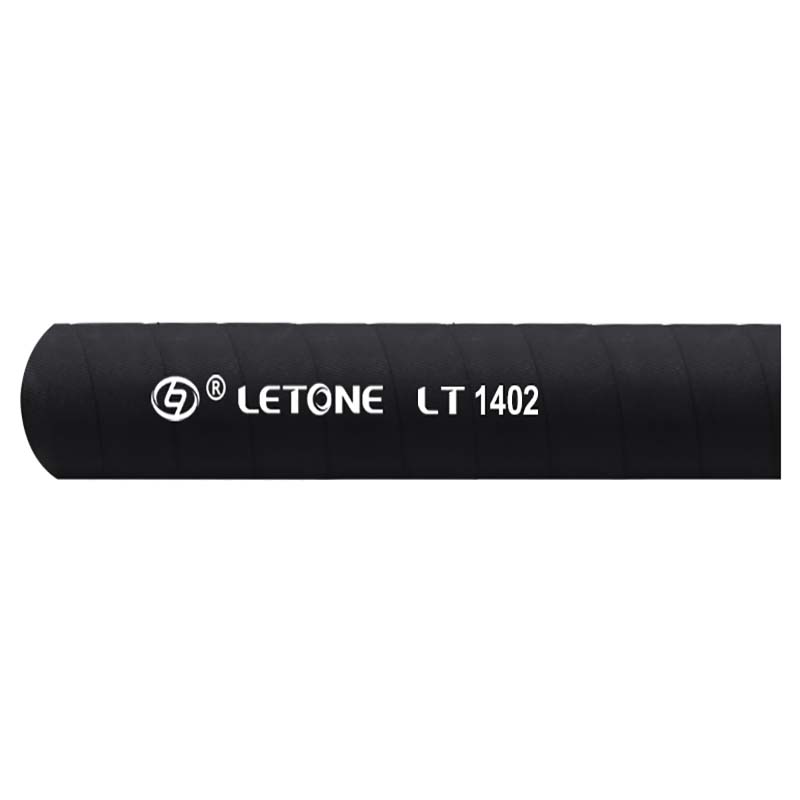2025-03-31 14:46:36
Furnace door coolant hose
As a core transmission component for high-temperature industries such as metallurgy and casting, the furnace door coolant rubber hose redefines the reliability standard under extreme working conditions with a five-layer composite structure. It uses a gradient composite inner layer of fluororubber (FKM) and ethylene propylene diene monomer (EPDM), and a double-layer stainless steel wire braided reinforcement layer. It can continuously withstand 4MPa dynamic pressure and drastic temperature fluctuations of 0.5℃ per second in a 1600℃ radiant heat environment. Passing ISO 7323 thermal aging test certification, the tensile strength retention rate of its pipe body is still 85% after being immersed in a 200℃ high-temperature oil medium for 2000 hours. With the outer layer of basalt fiber fireproof coating, it achieves UL94 V-0 flame retardant performance. In actual measurements at steel plants, the hose worked continuously for 8000 hours without leakage, successfully reducing the failure rate of the furnace door cooling system from 7.2% to 0.5%, becoming a "liquid firewall" to ensure the safe operation of metallurgical equipment.
Nano-scale heat shield structure: quadruple composite material
The technological breakthrough of the furnace door coolant hose comes from the precise design of material engineering:
Gradient temperature-resistant inner layer: FKM/EPDM molecular cross-linked network, resistant to -40℃ to +120℃ hot and cold shock, and 300% higher resistance to ethylene glycol coolant permeability;
Dynamic reinforcement layer: 304 stainless steel wire is wound with a 54°44' golden braiding angle, with an anti-burst pressure of 25MPa and a tube expansion rate of <0.3%;
Intelligent insulation layer: aerogel nanoparticle composite silica gel, which reduces the external radiation heat conductivity coefficient to 0.018W/(m·K);
External protective armor: basalt fiber braided mesh coated with ceramic silicone rubber, forming a 3mm carbonized protective layer when exposed to open flames.
In an aluminum alloy smelting plant application, the hose withstands 1200℃ heat radiation at the moment the furnace door is opened, and the surface temperature of the tube body is stabilized below 80℃, with a service life 5 times longer than that of traditional hoses.
Conquer all scenarios: Extreme challenges from continuous casting machines to glass furnaces
The adaptability of furnace door coolant hoses is reshaping the operation and maintenance standards of high-temperature industrial equipment:
Steel continuous casting equipment: In the secondary cooling section, it withstands 1600℃ billet radiation heat, and the cooling water flow fluctuation is less than ±2%;
Glass melting furnace: The alkali-resistant model has passed EN ISO 10380 certification, and the service life is up to 3 years in a strong alkaline environment of pH13;
Copper rolling production line: The anti-oxidation design controls the dissolved oxygen content of the coolant below 0.5ppm;
Chemical cracking unit: The hydrocarbon medium penetration-resistant hose has passed TA-Luft certification, and the VOC emission is less than 10mg/m³.
Baosteel Group's measured data shows that after using a five-layer composite structure hose, the energy efficiency of the continuous casting machine crystallizer cooling system has increased by 22%, and the spare parts replacement cycle has been extended from 3 months to 18 months.
Smart operation and maintenance system: the engineering code for doubling the life of hoses
To maximize the performance of hoses, a full life cycle management model needs to be built:
Precise selection:
When the thermal radiation intensity is greater than 50kW/m², the aerogel insulation layer model must be used
When the pressure pulsation is greater than 10Hz, a double-layer steel wire reinforced model (fatigue resistance Class 4) needs to be configured
Installation specifications:
The minimum bending radius is ≥ 12 times the pipe diameter to prevent plastic deformation of the stainless steel wire layer
A high-temperature protective cover is set every 1.5 meters to reduce radiant heat conduction
Intelligent monitoring:
Built-in NTC temperature sensor to monitor the temperature difference between the inside and outside of the pipe wall in real time (automatic alarm when greater than 30℃)
The laser thickness measurement system accurately captures 0.1mm level wear changes
Regeneration technology:
Plasma surface treatment technology can repair 80% of crack damage
In the smart factory of Shagang Group, the comprehensive cost of hoses is reduced by 58% through the IoT operation and maintenance platform, and the average service life exceeds 26,000 hours.


Leave a Comment